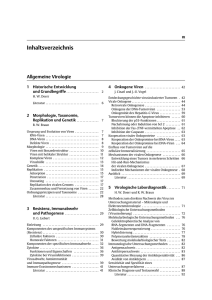Inhaltsverzeichnis
Werbung
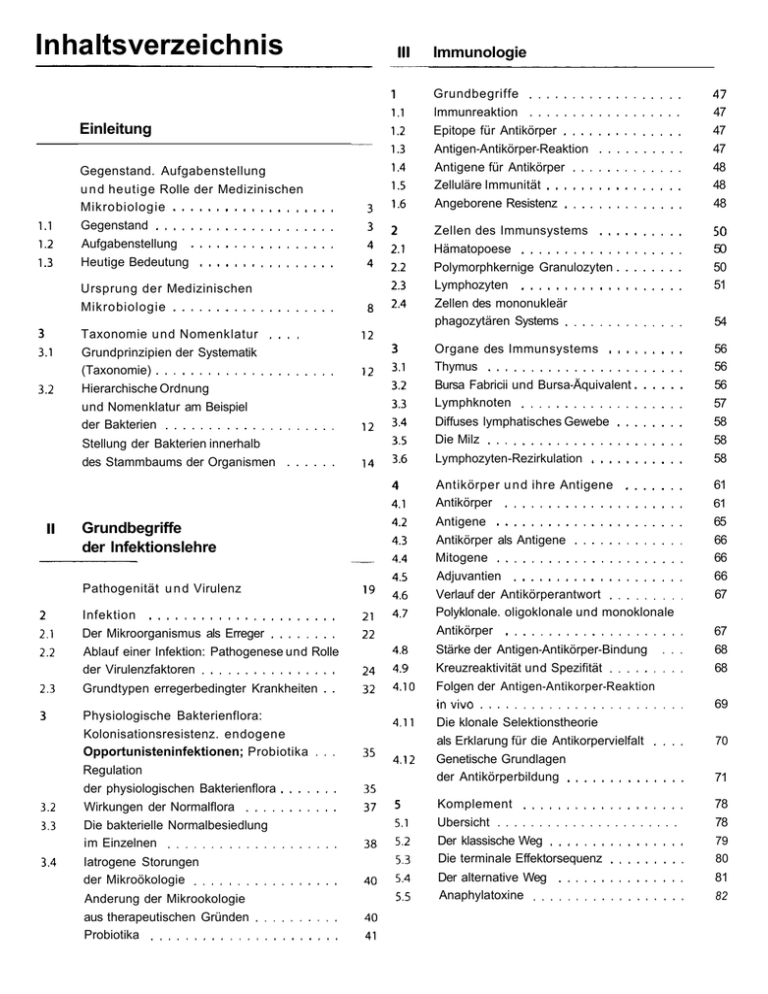
Inhaltsverzeichnis Immunologie Grundbegriffe . . . . . . . . . . . . . . . . . lmmunreaktion . . . . . . . . . . . . . . . . . . Einleitung Gegenstand. Aufgabenstellung u n d heutige Rolle der Medizinischen Mikrobiologie . . . . . . . . . . . . . . . . . . . Gegenstand . . . . . . . . . . . . . . . . . . . . . Aufgabenstellung . . . . . . . . . . . . . . . . . Heutige Bedeutung . . . . . . . . . . . . . . . . Ursprung der Medizinischen Mikrobiologie . . . . . . . . . . . . . . . . . . . Taxonomie und Nomenklatur . . . . Grundprinzipien der Systematik (Taxonomie) . . . . . . . . . . . . . . . . . . . . . Hierarchische Ordnung und Nomenklatur am Beispiel der Bakterien . . . . . . . . . . . . . . . . . . . . Stellung der Bakterien innerhalb des Stammbaums der Organismen . . . . . . Grundbegriffe der lnfektionslehre Pathogenität u n d Virulenz Infektion . . . . . . . . . . . . . . . . . . . . . . Der Mikroorganismus als Erreger . . . . . . . . Ablauf einer Infektion: Pathogenese und Rolle der Virulenzfaktoren . . . . . . . . . . . . . . . . Grundtypen erregerbedingter Krankheiten . . Physiologische Bakterienflora: Kolonisationsresistenz. endogene Opportunisteninfektionen; Probiotika . . . Regulation der physiologischen Bakterienflora . . . . . . . Wirkungen der Normalflora . . . . . . . . . . . Die bakterielle Normalbesiedlung im Einzelnen . . . . . . . . . . . . . . . . . . . . Iatrogene Storungen der Mikroökologie . . . . . . . . . . . . . . . . . Anderung der Mikrookologie aus therapeutischen Gründen . . . . . . . . . . Probiotika . . . . . . . . . . . . . . . . . . . . . . . 47 47 Epitope für Antikörper . . . . . . . . . . . . . . Antigen-Antikörper-Reaktion . . . . . . . . . . Antigene für Antikörper . . . . . . . . . . . . . Zelluläre Immunität . . . . . . . . . . . . . . . . Angeborene Resistenz . . . . . . . . . . . . . . 47 47 48 48 48 Zellen des Immunsystems . . . . . . . . . . Hämatopoese . . . . . . . . . . . . . . . . . . . Polymorphkernige Granulozyten . . . . . . . . Lymphozyten . . . . . . . . . . . . . . . . . . . Zellen des mononukleär phagozytären Systems . . . . . . . . . . . . . . 50 50 Organe des Immunsystems . . . . . . . . . Thymus . . . . . . . . . . . . . . . . . . . . . . . Bursa Fabricii und Bursa-Äquivalent . . . . . . Lymphknoten . . . . . . . . . . . . . . . . . . . 56 56 56 57 Diffuses lymphatisches Gewebe . . . . . . . . Die Milz . . . . . . . . . . . . . . . . . . . . . . . Lymphozyten-Rezirkulation . . . . . . . . . . . 58 58 58 Antikörper u n d ihre Antigene . . . . . . . Antikörper . . . . . . . . . . . . . . . . . . . . . Antigene . . . . . . . . . . . . . . . . . . . . . . Antikörper als Antigene . . . . . . . . . . . . . Mitogene . . . . . . . . . . . . . . . . . . . . . . Adjuvantien . . . . . . . . . . . . . . . . . . . . Verlauf der Antikörperantwort . . . . . . . . . Polyklonale. oligoklonale und monoklonale Antikörper . . . . . . . . . . . . . . . . . . . . . Stärke der Antigen-Antikörper-Bindung . . . Kreuzreaktivität und Spezifität . . . . . . . . . Folgen der Antigen-Antikorper-Reaktion . . in vivo . . . . . . . . . . . . . . . . . . . . . . . . Die klonale Selektionstheorie als Erklarung für die Antikorpervielfalt . . . . Genetische Grundlagen der Antikörperbildung . . . . . . . . . . . . . . 50 51 54 61 61 65 66 66 66 67 67 68 68 69 70 71 Komplement . . . . . . . . . . . . . . . . . . . Ubersicht . . . . . . . . . . . . . . . . . . . . . . Der klassische Weg . . . . . . . . . . . . . . . . Die terminale Effektorsequenz . . . . . . . . . 78 78 Der alternative Weg . . . . . . . . . . . . . . . Anaphylatoxine . . . . . . . . . . . . . . . . . . 81 82 79 80 Inhaltsverzeichnis Antigen-Antikörper-Reaktion: Grundlagen serologischer Methoden . . . Bildung sichtbarer Antigen-Antikorper-Komplexe . . . . . . . . . Nachweis der Antigen-AntikorperReaktion durch markierte Antikorper . . . . . Blutgruppenserologie . . . . . . . . . . . . . . Haupt-Histokompatibilitäts-Komplex . . . Übersicht . . . . . . . . . . . . . . . . . . . . . . Genetik des MHC . . . . . . . . . . . . . . . . . Biochemie der MHC-Moleküle . . . . . . . . . T-Zellen . . . . . . . . . . . . . . . . . . . . . . . T-Zell-abhängige Immunphänomene . . . . . Antigenerkennung durch T-Lymphozyten . . T-Zellrezeptor . . . . . . . . . . . . . . . . . . . T-Zellpopulationen und ihr Phänotyp . . . . Antigenpräsentation und T-Zell-Antwort . . . Endogene. exogene Antigene und Superantigene . . . . . . . . . . . . . . . . Helfer-T-Zellen und Zytokin-Sekretion . . . . Zytokine . . . . . . . . . . . . . . . . . . . . . . . Akzessorische Moleküle . . . . . . . . . . . . . Zytolytische T-Lymphozyten . . . . . . . . . . Regulatorische T-Lymphozyten . . . . . . . . . Die wichtigsten Wege der T-Zell-abhängigen Immunität . . . . . . . Mononukleäre Phagozyten u n d Antigenpräsentierende Zellen . . . . . . . . . . . . . Phagozytose . . . . . . . . . . . . . . . . . . . . Intrazelluläre Keimabtötung und Verdauung . . . . . . . . . . . . . . . . . . Das mononukleär-phagozytäre System . . . . Rezeptoren und Oberflächenmarker . . . . . Sekretion . . . . . . . . . . . . . . . . . . . . . . Makrophagenaktivierung . . . . . . . . . . . . Antigen-präsentierende Zellen irn engeren Sinn . . . . . . . . . . . . . . . . . . lmmunpathologie . . . . . . . . . . . . . . . . Entzündung und Gewebeschädigung . . . . Spezifische Überempfindlichkeit . . . . . . . . Autoimmunerkrankungen . . . . . . . . . . . . Transplantation . . . . . . . . . . . . . . . . . . Defekte des lmmunsystems und Immunmangelkrankheiten . . . . . . . . . . . . . . . . Infektabwehr . . . . . . . . . . . lnfektionen mit Bakterien. Pilzen und Protozoen . . . . . . . . . . . .... ........ Virusinfektion . . . . . . . . . . . . . . . . . . . . Strategien der Erreger gegen professionelle Phagozyten . . . . . . . . . . . . . . . . . . . . . Prinzipien der lmpfstoffentwicklung . . . . . . Epidemiologie und Prävention Epidemiologie der Infektionskrankheiten . . . . . . . . . . . . . . . . . . . . . . . . Grundbegriffe . . . . . . . . . . . . . . . . . . . . Methoden . . . . . . . . . . . . . . . . . . . . . . Besonderheiten der lnfektionsepiderniologie . . . . . . . . . . . Spezielle epidemiologische Aspekte bei Virusinfektionen . . . . . . . . . . . . . . . . lnterepidemischer Verbleib der Viren . . . . . Prävention von Bakterien- und Viruslnfektionen . . . . . . . . . . . . . . . . . . . . . Grundbegriffe . . . . . . . . . . . . . . . . . . . . Amtliche Maßnahmen: Gesetze und Empfehlungen . . . . . . . . . . . Isolierung und Quarantäne . . . . . . . . . . . Sterilisation u n d Desinfektion . . . . . . . . Grundbegriffe . . . . . . . . . . . . . . . . . . . . Sterilisationsverfahren . . . . . . . . . . . . . . . Desinfektionsverfahren . . . . . . . . . . . . . . Weitere Verfahren zur Reduktion von Mikroorganismen . . . . . . . . . . . . . . . Allgemeine Bakteriologie Bakterien: Definition u n d Aufbau . . . . . . Morphologische Grundformen . . . . . . . . . Aufbau . . . . . . . . . . . . . . . . . . . . . . . . Bakterien: Vermehrung u n d Stoffwechsel Bakterienverrnehrung . . . . . . . . . . . . . . . Stoffwechsel von Bakterien . . . . . . . . . . . Inhaltsverzeichnis Typhöse Salmonellen: Salmonella Typhi. Spezielle Bakteriologie Staphylokokken . . . . . . . . . . . . . . . Staphylococcus aureus (S. aureus) . Koagulasenegative Staphylokokken: Staphylococcus epidermidis . . . . . ... ...... Staphylococcus-saprophyticus-Gruppe Streptokokken .... ................. Streptococcus pyogenes (A-Streptokokken) Streptococcus agalactiae (B-Streptokokken) Andere /I-hämolysierende Streptokokken (C und G) . . . . . . . . . . . . . . . . . . . . . Streptococcus pneumoniae (Pneumokokken) . . . . . . . . . . . . . . . . . Sonstige vergrünende Streptokokken (ohne Pneumokokken) und nichthämolysierende Streptokokken . . . . . . . Enterokokken u n d weitere katalasenegative grampositive Kokken Enterococcus faecalis und Enterococcus faecium . . . . . . . . . . . . . . . . . . . . . . . . Weitere grampositive Kokken . . . . . . . . . . Neisserien ............... Neisseria gonorrhoeae (Gonokokken) Neisseria meningitidis (Meningokokken) . . . . . . . . . . . . . . . . . . Übrige Neisseriaarten . . . . . . . . . . . . . . . Enterobakterien . . . . . . . . . . . . . . . . . Escherichia coli (fakultativ pathogene Stämme) . . . . . . . . . . . . . . . . . . . . . . . Säuglingspathogene Escherichia-coliStamme (EPEC) . . . . . . . . . . . . . . . . . . . Enteroaggregative Escherichia-coliStämme (EAEC) . . . . . . . . . . . . . . . . . . . Enterotoxinogene Escherichia-coliStämme (ETEC) . . . . . . . . . . . . . . . . . . . Enteroinvasive Escherichia-coli-Stämme (EIEC) . . . . . . . . . . . . . . . . . . . . . . . . . Enterohamorrhagische Escherichia-coliStamme (EHEC) Shigatoxin-bildende E. coli (STEC) . . . . . . . . . . . . . . . . . . . . Klebsiellen . . . . . . . . . . . . . . . . . . . . . . Enterobacter . . . . . . . . . . . . . . . . . . . . Serratia . . . . . . . . . . . . . . . . . . . . . . . . Proteus . . . . . . . . . . . . . . . . . . . . . . . . Sonstige wichtige fakultativ pathogene Enterobakterien . . . . . . . . . . . . . . . . . . . Salmonella Paratyphi A. B. C . . . . . . . . . . Enteritis-Salmonellen . . . . . . . . . . . . . . . Shigellen . . . . . . . . . . . . . . . . . . . . . . Yersinia enterocolitica und Yersinia pseudotu berculosis . . . . . . . . . . . . . . . . Yersinia pestis . . . . . . . . . . . . . . . . . . . Vibrionen. Aeromonas . . . . . . . . . . . . . Vibrio cholerae. Biovar cholerae und Vibrio cholerae. Biovar EI Tor . . . . . . . Nichtagglutinierbare (Non-Cholera-)Vibrionen . . . . . . . . . . . . . Aeromonas . . . . . . . . . . . . . . . . . . . . . Nichtfermentierende Bakterien (Nonfermenter): Pseudomonas. Burkholderia. Stenotrophomonas. Acinetobacter . . . . . . . . . . . . . . . . . . Pseudomonas aeruginosa . . . . . . . . . . . . Burkholderia . . . . . . . . . . . . . . . . . . . . Stenotrophomonas maltophilia . . . . . . . . Acinetobacter . . . . . . . . . . . . . . . . . . . Carnpylobacter . . . . . . . . . . . . . . . . . . Campylobacter jejuni . . . . . . . . . . . . . . . Übrige Campylobacterarten . . . . . . . . . . Helicobacter . . . . . . . . . . . . . . . . . . . Helicobacter pylori . . . . . . . . . . . . . . . . Helicobacter heilmannii . . . . . . . . . . . . . Haemophilus . . . . . . . . . . . . . . . . . . . Haemophilus influenzae . . . . . . . . . . . . . Haemophilus parainfluenzae . . . . . . . . . . Haemophilus aphrophilus und Haemophilus paraphrophilus . . . . . . . . . . . . . . . . . . Haemophilus ducreyi . . . . . . . . . . . . . . . Bordetellen . . . . . . . . . . . . . . . . . . . . Bordetella pertussis . . . . . . . . . . . . . . . . Andere Bordetellen . . . . . . . . . . . . . . . . Legionellen . . . . . . . . . . . . . . . . . . . . Legionella pneumophila . . . . . . . . . . . . . Andere Legionellen . . . . . . . . . . . . . . . . Anthropozoonoseerreger ohne Familienzugehörigkeit: Listerien. Brucellen. Francisellen u n d Erysipelothrix . . . . . . . Listerien . . . . . . . . . . . . . . . . . . . . . . . Brucellen . . . . . . . . . . . . . . . . . . . . . . Francisellen . . . . . . . . . . . . . . . . . . . . . Erysipelothrix rhusiopathiae . . . . . . . . . . Inhaltsverzeichnis Korynebakterien . . . . . . . Corynebacterium diphtheriae Andere Korynebakterien . . . ......... ........ ......... Bacillus . . . . . . . . . . . . . . . . . . . . . . . Bacillus anthracis . . . . . . . . . . . . . . . . . Bacillus cereus . . . . . . . . . . . . . . . . . . . Übrige Bacillusarten . . . . . . . . . . . . . . . Obligat anaerobe sporenbildende Stäbchen (Clostridien) . . . . . . . . . . . . . Clostridium perfringens . . . . . . . . . . . . . Clostridium tetani . . . . . . . . . . . . . . . . . Clostridium botulinum . . . . . . . . . . . . . . Clostridium difficile . . . . . . . . . . . . . . . . Nichtsporenbildende obligat anaerobe Bakterien . . . . . . . . . . . . . . . . . . . . . . Obligat anaerobe gramnegative Stäbchen (Bacteroidaceae) . . . . . . . . . . . . . . . . . . Obligat anaerobe und rnikroaerophile nichtsporenbildende grampositive Stäbchen . . . Obligat anaerobe und mikroaerophile Kokken . . . . . . . . . . . . . . . . . . . . . . . 25 25.1 25.2 Mykoplasmen und Ureaplasmen . . . . . . Mycoplasma pneumoniae . . . . . . . . . . . . Mycoplasma hominis. Ureaplasma urealyticum . . . . . . . . . . . . . . . . . . . . . 26 26.1 26.2 26.3 26.4 26.5 Chlamydien . . . . . . . . . . . . . . . . . . . . Chlamydia trachomatis. Serotyp A-C . . . . . Chlamydia trachomatis. Serotypen D-K . . . Chlamydia trachomatis. Serotypen LI-L3 . . Chlamydia psittaci . . . . . . . . . . . . . . . . . Chlamydia pneumoniae . . . . . . . . . . . . . Weitere medizinisch bedeutsame Bakterien . . . . . . . . . . . . . . . . . . . . . . 27.1 Tropheryma whipplei . . . . . . . . . . . . . . . 27.2 Pasteurella multocida . . . . . . . . . . . . . . . 27.3 Moraxella catarrhalis . . . . . . . . . . . . . . . . 27.4 HACEK-Gruppe . . . . . . . . . . . . . . . . . . . 27.5 Streptobacillus moniliformis, Spirillum minus 27.6 Gardnerella vaginalis . . . . . . . . . . . . . . . Farbtafeln . . . . . . . . . . . . . . . . . . . . . . . . . . . VII Nocardien und aerobe Aktinomyzeten . . Nocardien . . . . . . . . . . . . . . . . . . . . . . Andere aerobe Aktinomyzeten . . . . . . . . . Allgemeine Virologie Abkürzungsverzeichnis zu Kapitel VII und Vlll (Virologie) . . . . . . . . . . . . . . . . . . . . . . . Treponemen . . . . . . . . . . . . . . . . . . . Treponema pallidum. subsp. pallidum . . . . Andere Treponernen . . . . . . . . . . . . . . . Danksagung 1 1.1 Borrelien . . . . . . . . . . . . . . . . . . . . . . Borrelia (B.) burgdorferi . . . . . . . . . . . . . Borrelia recurrentis und andere Rückfallfieber-Borrelien (Borrelia spp.) . . . . . . . . . 1.2 1.3 1.4 1.5 Leptospiren . . . . . . . . . . . . . . . . Leptospira interrogans . . . . . . . . . . Weitere Leptospiren . . . . . . . . . . . 2 2.1 2.2 2.3 2.4 Rickettsien. Orientien. Coxiellen. Ehrlichien. Anaplasmen. Neorickettsien . . . . . . . . . Rickettsia prowazekii . . . . . . . . . . . . . . . Coxiella burnetii . . . . . . . . . . . . . . . . . . Ehrlichia. Anaplasma. Neorickettsia . . . . . . Andere Rickettsien . . . . . . . . . . . . . . . . Bartonellen . . . . . . . . . . . . . . . . . . . . Bartonella henselae . . . . . . . . . . . . . . . . Bartonella quintana . . . . . . . . . . . . . . . . Bartonella bacilliformis . . . . . . . . . . . . . . Andere Bartonellen . . . . . . . . . . . . . . . . 27 Mykobakterien . . . . . . . . . . . . . . . . . . Mycobacterium tuberculosis . . . . . . . . . . Atypische Mykobakterien (MOTT) . . . . . . . Mycobacterium leprae . . . . . . . . . . . . . . 24 24.1 24.2 24.3 24.4 3 3.1 416 3.2 3.3 3.4 Virusbegriff.Struktur.Einteilung . . . . Merkmale von Viren . . . . . . . . . . . . . . . . Das Virion . . . . . . . . . . . . . . . . . . . . . . Einteilung der Viren . . . . . . . . . . . . . . . . Viroide, Virusoide und Prionen . . . . . . . . . Bakteriophagen . . . . . . . . . . . . . . . . . . . Virusreplikation . . . . . . . . . . . . . . . . . . DNS und RNS als lnforrnationsträger . . . . . Einstufen-Verrnehrungsversuch . . . . . . . . . Replikationszyklus von Viren . . . . . . . . . . Abortiver Zyklus und Quasispezies . . . . . . . Pathogenität .lnfektionsverlauf . . . . . . Pathogenitat und Virulenz . . . . . . . . . . . . Wirtsspektrum . . . . . . . . . . . . . . . . . . . Organotropismus . . . . . . . . . . . . . . . . . . Faktoren der Pathogenitat . . . . . . . . . . . . 465 Lebendimpfstoffe lnfektionsverlauf ................. .................. Ausbreitungswege von Viren im Organismus . . . . . . . . . . . . . . . . . . . Abwehrmechanismen bei Virusinfektionen . . Virus u n d Tumor: Grundbegriffe der Onkologie . . . . . . . . . . . . . . . . . . . Geschichtliche Einleitung . . . . . . . . . . . . . Grundbegriffe . . . . . . . . . . . . . . . . . . . . Transformation . . . . . . . . . . . . . . . . . . . Malignität des Tumors . . . . . . . . . . . . . . Molekulare Grundlagen der Tumorentstehung . . . . . . . . . . . . . . . Transformierende Noxen . . . . . . . . . . . . . Genetische Prädisposition . . . . . . . . . . . . Stufen der Karzinogenese . . . . . . . . . . . . Der Tumor im Organismus . . . . . . . . . . . . Virus-Chemotherapie . . . . . . . . . . . . . . Allgemeines . . . . . . . . . . . . . . . . . . . . . Kombinationstherapie . . . . . . . . . . . . . . . Resistenzentwicklung . . . . . . . . . . . . . . . Selektivität . . . . . . . . . . . . . . . . . . . . . . Antiviral wirksame Substanzen und ihre Wirkungsmechanismen . . . . . . . . Anhang: Interferon . . . . . . . . . . . . . . . . . Differenzialdiagnose der Viruskrankheiten . . . . . . . . . . . . . . Allgemeines . . . . . . . . . . . . . . . . . . . . . Differenzialdiagnose . . . . . . . . . . . . . . . . Spezielle Virologie Picorna-Viren . . . . . . . . . . . . Polio-Viren . . . . . . . . . . . . . . . Coxsackie-Viren . . . . . . . . . . . . . . . . . . . ECHO-Viren . . . . . . . . . . . . . . . . . . . . . Parecho-Viren (ECHO 22 und 23) . . . . . . . . Entero-Viren 68. 69. 70. 71. 72 und 73-78 . . Rhino-Viren . . . . . . . . . . . . . . . . . . . . . Flavi-Viren . . . . . . . . . . . . . . . . . . . . . Beschreibung . . . . . . . . . . . . . . . . . . . . Gelbfieber-Virus . . . . . . . . . . . . . . . . . . Dengue-Fieber-Virus . . . . . . . . . . . . . . . . Virus der Frühsommer-Meningoenzephalitis (FSME) . . . . . . . . . . . . . . . . . . . . . . . . 3 3.1 3.2 Röteln-Virus . . . . . . . . . . . . . . . . . . . . Beschreibung des Virus . . . . . . . . . . . . . Rolle als Krankheitserreger . . . . . . . . . . . Corona-Viren . . . . . . . . . . . . . . . . . . . 4.1 Beschreibung . . . . . . . . . . . . . . . . . . . 4.2 Rolle als Krankheitserreger . . . . . . . . . . . Anhang: SARS-Corona-Virus . . . . . . . . . . . . . . . . 4 5 5.1 5.2 Orthomyxo-Viren . . . . . . . . . . . . . . . . Beschreibung . . . . . . . . . . . . . . . . . . . Rolle als Krankheitserreger . . . . . . . . . . . 6 6.1 6.2 6.3 6.4 6.5 6.6 6.7 Paramyxo-Viren . . . . . . . . . . . Parainfluenza-Viren . . . . . . . . . . Mumps-Virus . . . . . . . . . . . . . . . . . . . . Respiratory-Syncytial-Virus (RS-Virus) . . . . . Masern-Virus . . . . . . . . . . . . . . . . . . . . Guillain-Barre-Syndrom (GBS) . . . . . . . . . . Multiple Sklerose . . . . . . . . . . . . . . . . . Borna-Virus . . . . . . . . . . . . . . . . . . . . . 7 7.1 7.2 Tollwut-Virus . . . . . . . . . . . . . . . . . . . Beschreibung . . . . . . . . . . . . . . . . . . . Rolle als Krankheitserreger . . . . . . . . . . . 8 8.1 8.2 Arena-Viren . . . . . . . . . . . . . . . . . . . . LCM-Virus . . . . . . . . . . . . . . . . . . . . . . Lassa-Fieber-Virus . . . . . . . . . . . . . . . . . 9 9.1 9.2 9.3 Bunya-Viren . . . . . . . . . . . . . . . . . . . . Geschichte . . . . . . . . . . . . . . . . . . . . . Beschreibung des Virus . . . . . . . . . . . . . Rolle als Krankheitserreger . . . . . . . . . . . 10 10.1 10.2 10.3 10.4 Virus-Gastroenteritis . . . . . . . . . . . . . . Rota-Viren . . . . . . . . . . . . . . . . . . . . . Enteritische Adeno-Viren (Typ 40 und 41) . . Calici-Viren . . . . . . . . . . . . . . . . . . . . . Weitere Gastroenteritis-erzeugende Viren . . 11 11.4 11.5 Retro-Viren . . . . . . . . . . . . . . . . . . . . Gruppe der Retro-Viren . . . . . . . . . . . . . Human-lmmundefizienz-Virus (HIV) . . . . . . AIDS-definierende Infektionen durch opportunistische und obligat pathogene Erreger . . . . . . . . . . . . . . . . . . . . . . . . Human-T-Zell-Leukamie-Virus I (HTLV1) . . . HTLV2 . . . . . . . . . . . . . . . . . . . . . . . . 12 12.1 12.2 Parvo-Viren . . . . . . . . . . . . . . . . . . . . Parvo-Virus B19 . . . . . . . . . . . . . . . . . . Adeno-assoziierte Viren (AAV) . . . . . . . . . 11.1 11.2 11.3 Inhaltsverzeichnis 13 13.1 13.2 13.3 Papova-Vi ren . . . . . . . . . . . . . . . . . Papillom-Viren des Menschen . . . . . . . JC-Virus: Virus der progressiven multifokalen Leukoenzephalopathie (PML) . . . . . . . . . . 602 1 Sprosspilze: Blastomyzeten . . . . . . . . . . 685 ....................... 603 1.1 1.2 Candida albicans . . . . . . . . . . . . . . . . . . Weitere Candidaarten und andere askomyzetische Sprosspilze . . . . . . . . . . . . . . Cryptococcus neoformans . . . . . . . . . . . . Andere basidiomyzetische Sprosspilze . . . . . 685 BK-Virus 597 597 14 Adeno-Viren ................... 604 14.1 14.2 Beschreibung . . . . . . . . . . . . . . . . . . . Rolle als Krankheitserreger . . . . . . . . . . . '04 604 Herpes-Gruppe . . . . . Herpes-simplex-Virus . . X 1.3 1.4 ............. ............. Andere klinisch bedeutsame 636 2.5 Aspergillusarten . . . . . . . . . . . . . . . . . . Andere klinisch bedeutsame Hyphomyzeten der Abteilung Ascomycota . . Hyphomyzeten der Abteiiung Zygornycota . Pneumocystis jiroveci . . . . . . . . . . . . . . . 704 636 637 Anhang: Verletzungsmykosen . . . . . . . . . . . . . . . 705 640 650 3.1 Fadenpilze: Dermatophyten . . . . . . . . . . Trichophyton rubrurn . . . . . . . . . . . . . . . 707 707 3.2 3.3 Andere Trichophytonarten . . . . . . . . . . . . Andere humanpathogene Dermatophyten . . 711 712 Dimorphe Pilze . . . . . . . . . . . . . . . . . . Histoplasma capsulatum . . . . . . . . . . . . . Andere dimorphe Pilze der Ordnung Onygenaies . . . . . . . . . . . . . . . . . . . . . Farbtafeln . . . . . . . . . . . . . . . . . . . . . . . . . . . 714 714 ................. Humane Herpes-Viren 6. 7 u n d 8 (HHV 6. 7 und 8) . . . . . . . . . . . . . . . . . . . . . . .. 16 16.1 16.2 Virushepatitis . . . . . . . . . . . . . . . . . . . Übersicht . . . . . . . . . . . . . . . . . . . . . . Hepatitis A-Virus (HAV) . . . . . . . . . . . . . 16.3 16.4 16.5 16.6 16.7 16.8 Hepatitis B-Virus (HBV) . . . . . . . . . . . . . . Hepatitis DELTA-Virus (HDV) . . . . . . . . . . Hepatitis C-Virus (HCV) . . . . . . . . . . . . . Hepatitis E-Virus (HEV) . . . . . . . . . . . . . . Hepatitis G-Virus (HGV) . . . . . . . . . . . . . TT-Virus (TTV) und SEN-Virus . . . . . . . . . 16.9 nAutoimrnun-Hepatitis« 17 17.1 17.2 Pocken-Viren . . . . . . . . . . . . . . . . . . . Die Gruppe der Pocken-Viren . . . . . . . . . Molluscum contagiosum . . . . . . . . . . . . ............. 653 656 657 657 658 17.3 Pocken- und Vaccinia-Virus 659 659 660 661 17.4 Anhang 662 18 Prion-Krankheiten . . . . . . . . . . . . . . . . Einteilung . . . . . . . . . . . . . . . . . . . . . . 18.1 ........... ....................... 18.2 Prion-Krankheiten . . . . . . . . . Farbtafeln . . . . . . . . . . . . . . . . . . . ........ ........ 664 664 664 667 4 4.1 4.2 XI 1 1.1 XI1 IX 690 690 695 Fadenpilze: Hyphomyzeten . . . . . . . . . . Aspergillus fumigatus . . . . . . . . . . . . . . . Varizellen-Zoster-Virus . . . . . . . . . . . . . . Zytomegalie-Virus . . . . . . . . . . . . . . . . . Epstein-Barr-Virus Spezielle Mykologie 718 720 Allgemeine Parasitologie Allgemeine Parasitologie . . . . . . . . . . . Definitionen . . . . . . . . . . . . . . . . . . . . . 725 725 Spezielle Parasitologie Allgemeine Mykologie 1 1.1 Definition u n d Morphologie . . . . . . . . . Definition . . . . . . . . . . . . . . . . . . . . . . 1.2 Aufbau 2 2.1 2.2 Vermehrung u n d Stoffwechsel . . . . . . . Fortpflanzung . . . . . . . . . . . . . . . . . . . Stoffwechsel . . . . . . . . . . . . . . . . . . . . 679 679 3 Glossar . . . . . . . . . . . . . . . . . . . . . . . 681 ....................... 675 675 676 679 1 1.1 1.2 1.3 1.4 1.5 1.6 1.7 1.8 1.9 Protozoen . . . . . . . . . . . . . . . . . . . . . . 729 Trypanosomen . . . . . . . . . . . . . . . . . . . Leishmanien . . . . . . . . . . . . . . . . . . . . . Trichomonas . . . . . . . . . . . . . . . . . . . . Giardia . . . . . . . . . . . . . . . . . . . . . . . . Amöben . . . . . . . . . . . . . . . . . . . . . . . 729 734 739 Plasmodien . . . . . . . . . . . . . . . . . . . . . Toxoplasma . . . . . . . . . . . . . . . . . . . . . 745 750 Kryptosporidien . . . . . . . . . . . . . . . . . . Mikrosporidien . . . . . . . . . . . . . . . . . . . 754 756 740 742 2 2.1 2.2 Trematoden . . . . . . . . . . . . . . . . . . . . Schistosomen . . . . . . . . . . . . . . . . . . . . Weitere Trematoden . . . . . . . . . . . . . . . . 3 3.1 Cestoden (Bandwürmer) . . . . . . . . . . . . Echinococcus . . . . . . . . . . . . . . . . . . . . 3.2 3.3 3.4 Taenia saginata . . . . . . . . . . . . . . . . . . . Taenia solium . . . . . . . . . . . . . . . . . . . . Andere Bandwurmarten . . . . . . . . . . . . . Mikrobiologische Parameter . . . . . . . . . . Pharmakologische Parameter . . . . . . . . . . Patienteneigenschaften . . . . . . . . . . . . . XIV Spezielle antimikrobielle Chemotherapie Antibiotika . . . . . . . . . . . . . . . . . . . . Penicillin G und Penicillin V . . . . . . . . . . . Aminopenicilline: Ampicillin/Arnoxycillin . . . Acylaminopenicilline (Ureidopenicilline): Piperacillin. Mezlocillin . . . . . . lsoxazolylpenicilline . . . . . . . . . . . . . . . . Nematoden . . . . . . . . . . . . . . . . . . . . Trichuris . . . . . . . . . . . . . . . . . . . . . . . Trichinella . . . . . . . . . . . . . . . . . . . . . . Strongyloides . . . . . . . . . . . . . . . . . . . . Necator U. Ancylostoma . . . . . . . . . . . . . Enterobius . . . . . . . . . . . . . . . . . . . . . . Ascaris . . . . . . . . . . . . . . . . . . . . . . . . Filarien . . . . . . . . . . . . . . . . . . . . . . . . Cephalosporine 5 Ektoparasiten . . . . . . . . . . . . . . . . . . . 5.1 Lause . . . . . . . . . . . . . . . . . . . . . . . . . 5.2 Skabies (Krätze) . . . . . . . . . . . . . . . . . . . 5.3 Flöhe . . . . . . . . . . . . . . . . . . . . . . . . . 5.4 Sandflöhe . . . . . . . . . . . . . . . . . . . . . . 5.5 Fliegenlarven . . . . . . . . . . . . . . . . . . . . Farbtafeln . . . . . . . . . . . . . . . . . . . . . . . . . . . Carbapeneme . . . . . . . . . lmipenem . . . . . . . . . . . . . Meropenem und Ertapenem . Xlll Grundlagen der antimikrobiellen Glykopeptid-Antibiotika . . . . . . . . . . . . Vancornycin . . . . . . . . . . . . . . . . . . . . Teicoplanin . . . . . . . . . . . . . . . . . . . . . Chemotherapie Allgemeines . . . . . . . . . . . . . . . . . . Einteilung der Substanzen gegen Krankheitserreger . . . . . . . . . . . . . . . Historie . . . . . . . . . . . . . . . . . . . . . . Aminoglykoside . . . . . . . . . . . . . . . . . Gentamicin und Tobramycin . . . . . . . . . . Amikacin . . . . . . . . . . . . . . . . . . . . . . Streptomycin . . . . . . . . . . . . . . . . . . . . Spectinomycin . . . . . . . . . . . . . . . . . . . Antibakterielle Wirkung . . . . . . . . . . . . Wirktyp . . . . . . . . . . . . . . . . . . . . . . . . Wirkungsmechanismus . . . . . . . . . . . . . . Wirkungsspektrum . . . . . . . . . . . . . . . . . Tetracycline (Doxycyclin) . . . . . . . . . Beschreibung . . . . . . . . . . . . . . . . . Rolle als Therapeutikum . . . . . . . . . . . Resistenz . . . . . . . . . . . . . . . . . . . . . . Formen . . . . . . . . . . . . . . . . . . . . . . . . Genetik der Resistenz . . . . . . . . . . . . . . . Resistenzmechanismen . . . . . . . . . . . . . . Lincosamine (Clindamycin) . . . . . . . . . . Beschreibung . . . . . . . . . . . . . . . . . . . Rolle als Therapeutikum . . . . . . . . . . . . . Makrolide . . . . . . . . . . . . . . . . . . . . . Erythromycin . . . . . . . . . . . . . . . . . . . . Neuentwicklungen . . . . . . . . . . . . . . . . Pharmakokinetik Applikation und Dosierung . . . . . . . . Nebenwirkungen . . . . . . . . . . . . . . . . . 7 Auswahl v o n antimikrobiellen Substanzen (Indikation) . . . . . . . . . . . . . . . . . . . . . ................. Cefazolin (1. Generation) . . . . . . . . . . . . Cefotiam (2. Generation) . . . . . . . . . . . . Ceftriaxon. Cefotaxim (3. Generation) . . . . . Ceftazidirn (3. Generation: PseudomonasCephalosporin) . . . . . . . . . . . . . . . . . . Cefepim . . . . . . . . . . . . . . . . . . . . . . . 814 10.1 10.2 Antimikrobielle Folsäureantagonisten . Cotrimoxazol . . . . . . . . . . . . . . . . . . . . Dapson . . . . . . . . . . . . . . . . . . . . . . . 842 843 Inhaltsverzeichnis Pyrirnethamin ................... lnfektionsdiagnostik Fluorchinolone . . . . . . . . . . . . . . . . . . Ciprofloxacin . . . . . . . . . . . . . . . . . . . . Ofloxacin . . . . . . . . . . . . . . . . . . . . . . Neue Fluorchinolone . . . . . . . . . . . . . . . Klinische Diagnostik . . . . . . . . . . . . . . . Anamnese . . . . . . . . . . . . . . . . . . . . . . Körperlicher Befund . . . . . . . . . . . . . . . . Klinisch-chemische Parameter . . . . . . . . . . Apparative Untersuchungen . . . . . . . . . . . Mikrobiologische Diagnosesicherung . . . . . Konsequenzen für das ärztliche Handeln . . . Antimykobakterielle Therapeutika . . . . . INH . . . . . . . . . . . . . . . . . . . . . . . . . . Rifampicin . . . . . . . . . . . . . . . . . . . . . Ethambutol . . . . . . . . . . . . . . . . . . . . . Pyrazinarnid . . . . . . . . . . . . . . . . . . . . Weitere Antituberkulotika . . . . . . . . . . . . Clofazimin . . . . . . . . . . . . . . . . . . . . . Gewinnung u n d Handhabung v o n Untersuchungsmaterial . . . . . . . . . Prinzipien der Materialgewinnung . . . . . . . Arten von Untersuchungsmaterial . . . . . . . Transport . . . . . . . . . . . . . . . . . . . . . . . Weitere antibakterielle Substanzen . . . . Metronidazol . . . . . . . . . . . . . . . . . . . . Fosfomycin . . . . . . . . . . . . . . . . . . . . . Fusidinsäure . . . . . . . . . . . . . . . . . . . . Nitrofurantoin . . . . . . . . . . . . . . . . . . . Chloramphenicol . . . . . . . . . . . . . . . . . Polymyxine: Colistin und Polymyxin B . . . . Mupirocin . . . . . . . . . . . . . . . . . . . . . . Prinzipien der mikrobiologischvirologischen Labordiagnostik Bakteriologischer Nachweis des Erregers . . . Virologische Labordiagnose . . . . . . . . . . . Molekularbiologische Nachweisverfahren . . . Mykologische Labordiagnostik . . . . . . . . . Parasitologische Labordiagnostik . . . . . . . . Empfindlichkeitsprüfung gegen antimikrobielle ........ Streptogramine . . . . . . . . . . . . . . . . . . Oxazolidinone . . . . . . . . . . . . . . . . . . . Daptomycin . . . . . . . . . . . . . . . . . . . . Antimy kotika . . . . . . . . . . . . . . . . . . . Polyene . . . . . . . . . . . . . . . . . . . . . . . Antimetabolite . . . . . . . . . . . . . . . . . . . Triazole . . . . . . . . . . . . . . . . . . . . . . . Echinocandine . . . . . . . . . . . . . . . . . . . Allylamine: Terbinafin. Naftifin . . . . . . . . . Ciclopiroxolamin . . . . . . . . . . . . . . . . . . Antiparasitäre Substanzen . . . . . . Antimalariarnittel . . . . . . . . . . . . . Mittel gegen Trypanosomen: Suramin. Pentamidin. Melarsoprol. Eflornithin. Nifurtimox . . . . . . . . . . . . . . . . . . . . . Mittel gegen Leishmanien: Fünfwertiges Antimon . . . . . . . . . . . . . . . . . . . . . . . Mittel gegen Filarien: Diethylcarbamazin. lvermectin . . . . . . . . . . . . . . . . . . . . . Albendazol. Mebendazol. Thiabendazol . . . Praziquantel . . . . . . . . . . . . . . . . . . . . 3.7 Substanzen . . . . . . . . . . . . . . Treffsicherheit diagnostischer Tests ....... XVI Syndrome Sepsis . . . . . . . . . . . . . . . . . . . . . . . . Einteilung . . . . . . . . . . . . . . . . . . . . . . Epidemiologie . . . . . . . . . . . . . . . . . . . Erregerspektrum . . . . . . . . . . . . . . . . . . Pathogenese . . . . . . . . . . . . . . . . . . . . Klinik . . . . . . . . . . . . . . . . . . . . . . . . . Mikrobiologische Diagnostik . . . . . . . . . . . Therapie . . . . . . . . . . . . . . . . . . . . . . . Prophylaxe . . . . . . . . . . . . . . . . . . . . . . Bakterielle (mikrobielle) Endokarditis . . . Einteilung . . . . . . . . . . . . . . . . . . . . . . Epidemiologie . . . . . . . . . . . . . . . . . . . Erregerspektrum . . . . . . . . . . . . . . . . . . Pathogenese . . . . . . . . . . . . . . . . . . . . Klinik . . . . . . . . . . . . . . . . . . . . . . . . . Mikrobiologische Diagnostik . . . . . . . . . . . Therapie . . . . . . . . . . . . . . . . . . . . . . . Prävention . . . . . . . . . . . . . . . . . . . . . . Bakterielle Meningitis . . . . . . . . . . . . . . Einteilung . . . . . . . . . . . . . . . . . . . . . . Epidemiologie . . . . . . . . . . . . . . . . . . . Erregerspektrum . . . . . . . . . . . . . . . . . . Pathogenese . . . . . . . . . . . . . . . . . . . . Klinik . . . . . . . . . . . . . . . . . . . . . . . . . 916 916 7.6 7.7 Mikrobiologische Diagnostik . . . . . . . . . . Therapie . . . . . . . . . . . . . . . . . . . . . . . 941 943 916 916 917 920 7.8 Prävention ..................... 944 8 3.6 3.7 Mikrobiologische Diagnostik . . . . . . . . . . . Therapie . . . . . . . . . . . . . . . . . . . . . . . 920 923 3.8 Prävention ...................... 923 Genitaltraktinfektionen und sexuell übertragbare Krankheiten . . . . . . . . . . Einteilung . . . . . . . . . . . . . . . . . . . . . . Epidemiologie . . . . . . . . . . . . . . . . . . . Erregerspektrum . . . . . . . . . . . . . . . . . . Pathogenese . . . . . . . . . . . . . . . . . . . . 945 945 945 945 946 3 3.1 3.2 3.3 3.4 3.5 Augeninfektionen . . . . . . . . . . . . . . . . Definitionen . . . . . . . . . . . . . . . . . . . . . Einteilung . . . . . . . . . . . . . . . . . . . . . . Epidemiologie . . . . . . . . . . . . . . . . . . . Erregerspektrum . . . . . . . . . . . . . . . . . . Pathogenese . . . . . . . . . . . . . . . . . . . . Klinik . . . . . . . . . . . . . . . . . . . . . . . . . Mikrobiologische Diagnostik . . . . . . . . . . . Therapie . . . . . . . . . . . . . . . . . . . . . . . Pravention ...................... lnfektionen des oberen Respirationstrakts . . . . . . . . . . . . . . . . Einteilung . . . . . . . . . . . . . . . . . . . . . . Epidemiologie . . . . . . . . . . . . . . . . . . . Erregerspektrum . . . . . . . . . . . . . . . . . . Pathogenese . . . . . . . . . . . . . . . . . . . . Klinik . . . . . . . . . . . . . . . . . . . . . . . . . Mikrobiologische Diagnostik . . . . . . . . . . . Therapie . . . . . . . . . . . . . . . . . . . . . . . Prävention ...................... Weitere Erkrankungen im oberen Respirationstrakt . . . . . . . . . . ........ Pneumonien . . . . . . . . . . . . . . . . . . . . Einteilung . . . . . . . . . . . . . . . . . . . . . . Epidemiologie . . . . . . . . . . . . . . . . . . . Erregerspektrum . . . . . . . . . . . . . . . . . . 8.1 8.2 8.3 8.4 Klinik . . . . . . . . . . . . . . . . . . . . . . . . . Mikrobiologische Diagnostik . . . . . . . . . . Therapie . . . . . . . . . . . . . . . . . . . . . . . Prävention . . . . . . . . . . . . . . . . . . . . . Weitere Infektionen: lnfektionen von Embryo. Fetus und Neugeborenen . . . . . . . . . . . . Gastroenteritiden . . . . . . . . . . . . . . . . Einteilung . . . . . . . . . . . . . . . . . . . . . . Epidemiologie . . . . . . . . . . . . . . . . . . . Erregerspektrum . . . . . . . . . . . . . . . . . . Pathogenese . . . . . . . . . . . . . . . . . . . . Klinik . . . . . . . . . . . . . . . . . . . . . . . . . Mikrobiologische Diagnostik . . . . . . . . . . Therapie . . . . . . . . . . . . . . . . . . . . . . . Prävention . . . . . . . . . . . . . . . . . . . . . Intraabdominelle Infektionen . . . . . . . . Einteilung . . . . . . . . . . . . . . . . . . . . . . Epidemiologie . . . . . . . . . . . . . . . . . . . Erregerspektrum . . . . . . . . . . . . . . . . . . Pathogenese . . . . . . . . . . . . . . . . . . . . Klinik . . . . . . . . . . . . . . . . . . . . . . . . . Mikrobiologische Diagnostik . . . . . . . . . . Therapie . . . . . . . . . . . . . . . . . . . . . . . Prophylaxe . . . . . . . . . . . . . . . . . . . . . Arthritis . . . . . . . . . . . . . . . . . . . . . . Pathogenese . . . . . . . . . . . . . . . . . . . . Klinik . . . . . . . . . . . . . . . . . . . . . . . . . Einteilung . . . . . . . . . . . . . . . . . . . . . Epidemiologie . . . . . . . . . . . . . . . . . . . Mikrobiologische Diagnostik . . . . . . . . . . . Therapie . . . . . . . . . . . . . . . . . . . . . . . Pravention . . . . . . . . . . . . . . . . . . . . . . Erregerspektrurn . . . . . . . . . . . . . . . . . . Pathogenese . . . . . . . . . . . . . . . . . . . . Klinik . . . . . . . . . . . . . . . . . . . . . . . . . Weitere lnfektionen des unteren Respirationstrakts . . . . . . . . . . . . . . . . . Mikrobiologische Diagnostik . . . . . . . . . . Therapie . . . . . . . . . . . . . . . . . . . . . . . Prävention . . . . . . . . . . . . . . . . . . . . . Weitere Infektionen im Gelenkbereich . . . . Harnwegsinfektionen . . . . . . . . . . . . . . Einteilung . . . . . . . . . . . . . . . . . . . . . . Epidemiologie . . . . . . . . . . . . . . . . . . . Erregerspektrum . . . . . . . . . . . . . . . . . . Pathogenese . . . . . . . . . . . . . . . . . . . . Klinik . . . . . . . . . . . . . . . . . . . . . . . . . . Osteomyelitis . . . . . . . . . . . . . . . . . . . Einteilung . . . . . . . . . . . . . . . . . . . . . . Epidemiologie . . . . . . . . . . . . . . . . . . . Erregerspektrurn . . . . . . . . . . . . . . . . . . 12.4 12.5 12.6 12.7 12.8 Pathogenese . . . . . . . . . . . . . . . . . . . . Klinik . . . . . . . . . . . . . . . . . . . . . . . . . Mikrobiolagische Diagnostik . . . . . . . . . . Therapie . . . . . . . . . . . . . . . . . . . . . . ~rävention . . . . . . . . . . . . . . . . . . . . . Weitere lnfektionen mit Knochenbeteiligung: Der diabetische Fuß . . . . . . . . . . . . . . . Haut- und Weichteilinfektionen . . . . . . Einteilung . . . . . . . . . . . . . . . . . . . . . . Epidemiologie . . . . . . . . . . . . . . . . . . . Erregerspektrum . . . . . . . . . . . . . . . . . . Pathogenese . . . . . . . . . . . . . . . . . . . . Klinik . . . . . . . . . . . . . . . . . . . . . . . . . Mikrobiologische Diagnostik . . . . . . . . . . Therapie . . . . . . . . . . . . . . . . . . . . . . . Prävention . . . . . . . . . . . . . . . . . . . . . Wundinfektionen . . . . . . . . . . . . . . . . . Nosokomiale lnfektionen . . . . . . . . . . . Erregerspektrurn . . . . . . . . . . . . . . . . . . Prävention . . . . . . . . . . . . . . . . . . . . . lnfektionen bei geriatrischen Patienten . Allgemeines . . . . . . . . . . . . . . . . . . . . Infektionen . . . . . . . . . . . . . . . . . . . . . Biologische Waffen.eine neue Herausforderung an Diagnostik. Therapie. Klinik und Prävention . . . . . . . . . . . . . Definition . . . . . . . . . . . . . . . . . . . . . . Einsatzmöglichkeiten . . . . . . . . . . . . . . . Geschichte . . . . . . . . . . . . . . . . . . . . . Kontrolle von biologischen Waffen . . . . . . 963 963 964 964 965 Anhang lmpfempfehlungen der Ständigen l m ~ f k o m m i ~ ~ am i o nRObert-KochInstitut (STIKO) - Stand: Juli 2003 lmpfkalender (Standardimpfungen) für Säuglinge. Kinder. Jugendliche und Erwachsene Empfohlenes Impfalter und Mindestabstände zwischen den Impfungen . . . . . . . . . . . . . . . . . Indikations- und Auffrischimpfungen sowie andere Maßnahmen der spezifischen Prophylaxe . . . Gesetz zur Verhütung und Bekämpfung von Infektionskrankheiten beim Menschen (Infektionsschutzgesetz- IfSG) (Auszug) . . . . . . . . 986 987 997 Literaturverzeichnis . . . . . . . . . . . . . . . . . . . . 1001 Sachverzeichnis . . . . . . . . . . . . . . . . . . . . . . . 1011
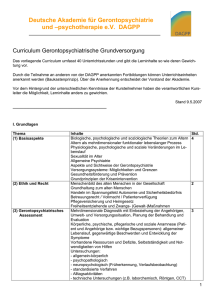
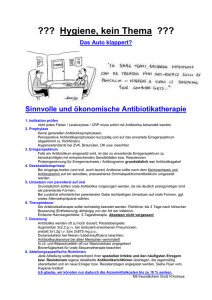
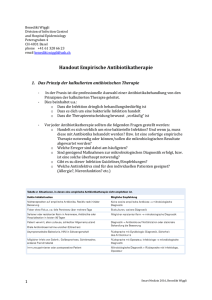
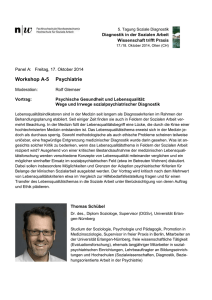
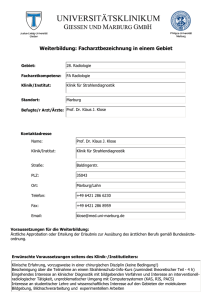
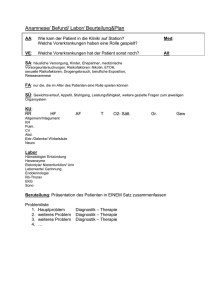
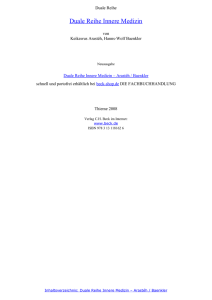
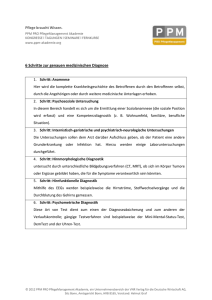
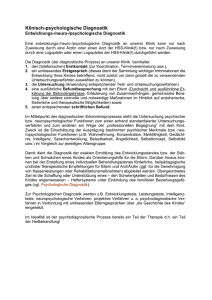
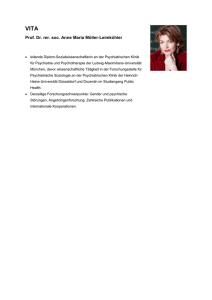
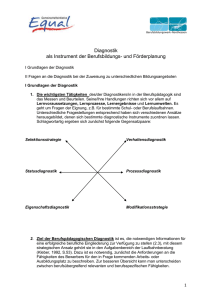
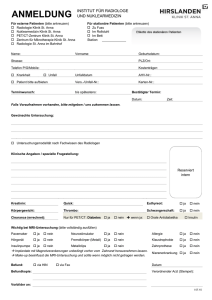
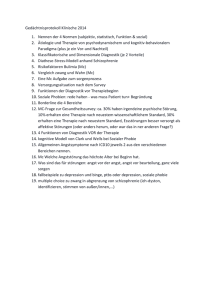
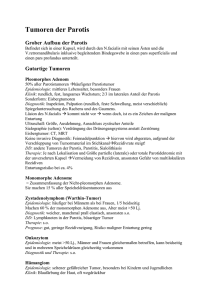
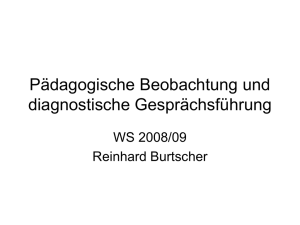
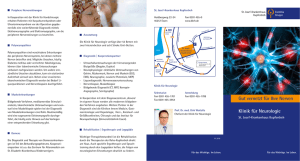
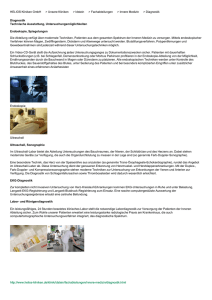
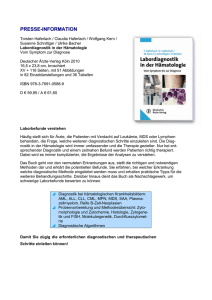
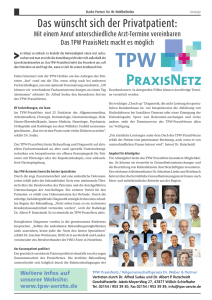
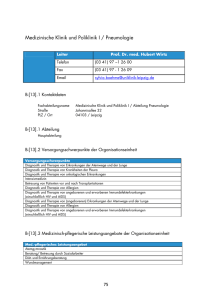
![2012 Pseudoadikulärer Schmerz - Diagnostik [Kompatibilitätsmodus]](http://s1.studylibde.com/store/data/001613509_1-07ef295415066d8eb7e81a9b5a2ac753-300x300.png)
